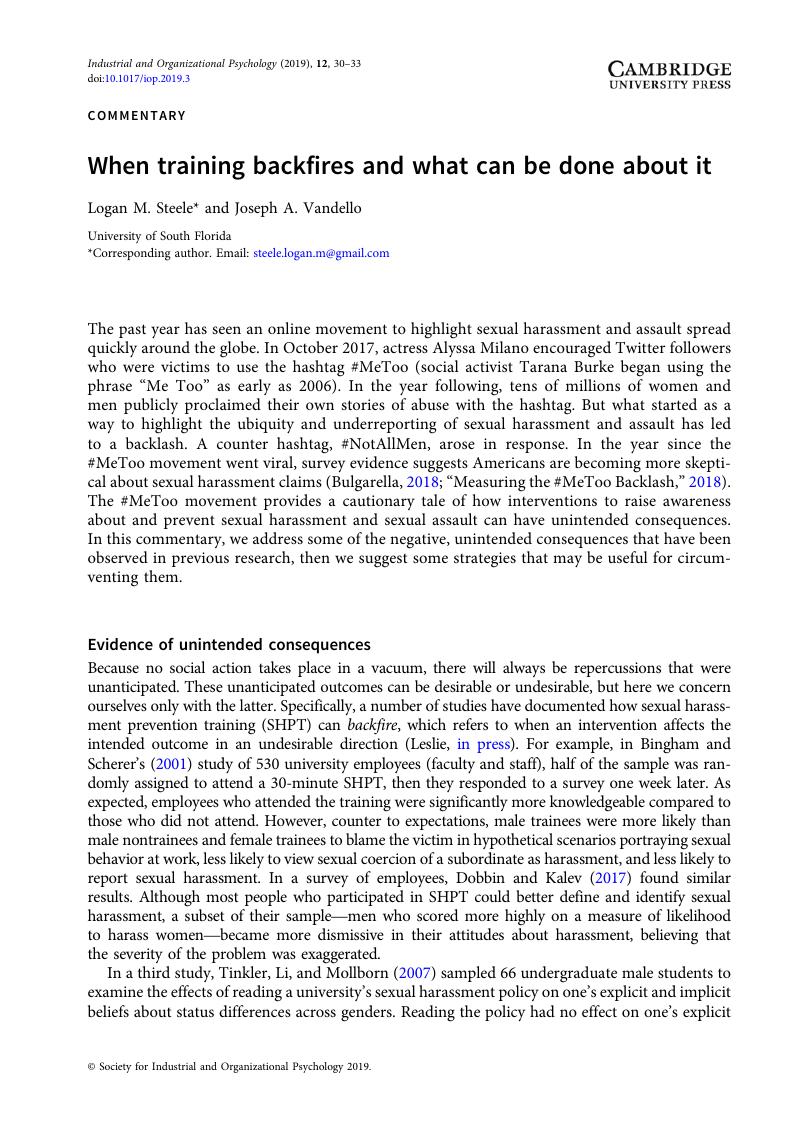Crossref Citations
This article has been cited by the following publications. This list is generated based on data provided by Crossref.
Perry, Sara Jansen
2020.
Changing the narrative on harassment and discrimination training: Building an organizational culture with healthy professional boundaries.
Industrial and Organizational Psychology,
Vol. 13,
Issue. 2,
p.
186.
Griffith, Jennifer A.
and
Medeiros, Kelsey E.
2020.
Expanding the footprint of sexual harassment prevention training: A power, credit, and leadership perspective.
Industrial and Organizational Psychology,
Vol. 13,
Issue. 2,
p.
137.
Sacco, Donald F.
Brown, Mitch
and
May, Haley D.
2021.
Not Taking a Joke: The Influence of Target Status, Sex, and Age on Reactions to Workplace Humor.
Psychological Reports,
Vol. 124,
Issue. 3,
p.
1316.
Atwater, Leanne E.
Sturm, Rachel E.
Taylor, Scott N.
and
Tringale, Allison
2021.
The era of #MeToo and what managers should do about it.
Business Horizons,
Vol. 64,
Issue. 2,
p.
307.
Bryan, Camellia
and
Lyons, Brent J.
2024.
Beyond Backlash: Advancing Dominant-Group Employees’ Learning, Allyship, and Growth Through Social Identity Threat.
Academy of Management Review,



